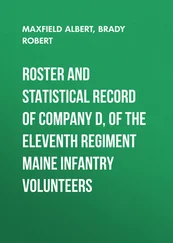Anthony Summers - The Eleventh Day
Здесь есть возможность читать онлайн «Anthony Summers - The Eleventh Day» весь текст электронной книги совершенно бесплатно (целиком полную версию без сокращений). В некоторых случаях можно слушать аудио, скачать через торрент в формате fb2 и присутствует краткое содержание. Жанр: Старинная литература, на английском языке. Описание произведения, (предисловие) а так же отзывы посетителей доступны на портале библиотеки ЛибКат.
- Название:The Eleventh Day
- Автор:
- Жанр:
- Год:неизвестен
- ISBN:нет данных
- Рейтинг книги:3 / 5. Голосов: 1
-
Избранное:Добавить в избранное
- Отзывы:
-
Ваша оценка:
- 60
- 1
- 2
- 3
- 4
- 5
The Eleventh Day: краткое содержание, описание и аннотация
Предлагаем к чтению аннотацию, описание, краткое содержание или предисловие (зависит от того, что написал сам автор книги «The Eleventh Day»). Если вы не нашли необходимую информацию о книге — напишите в комментариях, мы постараемся отыскать её.
The Eleventh Day — читать онлайн бесплатно полную книгу (весь текст) целиком
Ниже представлен текст книги, разбитый по страницам. Система сохранения места последней прочитанной страницы, позволяет с удобством читать онлайн бесплатно книгу «The Eleventh Day», без необходимости каждый раз заново искать на чём Вы остановились. Поставьте закладку, и сможете в любой момент перейти на страницу, на которой закончили чтение.
Интервал:
Закладка:
Five minutes after the second strike, NEADS mission commander Nasypany ordered his fighters to head for Manhattan. Now, though, there was no suspect airliner in New York airspace to intercept. When the pilots began to fly a Combat Air Patrol over Manhattan, as soon they did, there was no enemy to combat. As catastrophe overwhelmed the city, they could only watch from high above. “I thought,” Nash remembered, “it was the start of World War III.”
The Air Force officers and the FAA controllers rapidly began to fear—correctly—that they had seen only the start of something , that there were more strikes to come. Where might they come from? It was perhaps no coincidence, they figured, that both the planes so far hijacked had started their journeys from Logan Airport. “We don’t know how many guys are out of Boston,” mused mission commander Nasypany. “Could be just these two—could be more.” An FAA manager voiced the same thought. “Listen,” he said, “both of these aircraft departed Boston. Both were 76s, both heading to LA.”
“We need to do more than fuck with this,” Nasypany told Colonel Marr, urging him to scramble the other alert fighters available to them—at the Langley base, three hundred miles south of New York. Marr agreed at first only to put Langley on standby. Then, at 9:21, came a call with information that changed the colonel’s mind—and later led to lasting controversy.
The caller was Colin Scoggins, an FAA controller at Boston Center who—in part because of his own previous military service—had special responsibility for liaison with the Air Force. On the phone to NEADS, he shared stunning news:
S
COGGINS:
Military, Boston. I just had a report that American 11 is still in the air, and it’s on its way towards—heading towards Washington.
NEADS: OK. American 11 is still in the air?
S
COGGINS:
Yes … It was evidently another aircraft that hit the tower … This is a report in from Washington Center. You might want to get someone on another phone talking to Washington Center.
One of the technicians did check with Washington, more than once—only to be told that they knew nothing about American 11 still being airborne. “First I heard of that,” said one supervisor. The source could not be Washington Center, another said. He added, correctly, that “American 11 is the airplane, we’re under the premise, that has already crashed into the World Trade Center.” Scoggins, however, insisted that he had heard “from Washington” that American 11 was still in the air, going “southwest.”
After Flight 11’s transponder was switched off, FAA controllers at New York Center had entered a new “track” for the flight into the system in order to alert other controllers to the airliner’s projected southerly direction. The track remained in the system for a while even after the real Flight 11 had crashed into the Trade Center. 9/11 Commission staff conjectured that it was that track, and emerging information about the loss of Flight 77, that sparked the rumor that Flight 11 was still airborne.
Scoggins never has been able to recall his source of the erroneous information—only that he picked it up while “listening on a Telcon with some people at Washington HQ, and other facilities as well, but I don’t know who they were.”
The information was a red herring. In the chaos of the moment, however, no one knew for certain that it was Flight 11—as opposed to some other aircraft—that had hit the North Tower. If it had not, and if hijackers were taking the captured plane southwest—as Scoggins suggested—their target had to be Washington, D.C. The realization galvanized NEADS.
“Shit!” exclaimed Nasypany. Then, “OK. American Airlines is still airborne, 11, the first guy. He’s heading toward Washington. OK. I think we need to scramble Langley right now … Head them towards the Washington area.”
So it was that at 9:30, chasing a plane that did not exist, three more Air National Guard fighters raced into the air—three, not just the two on alert duty, because NEADS had asked for every plane available. If a hijacked airliner was headed for Washington, Nasypany figured, he would send the fighters to the north of the capital, and block its way. NEADS duly ordered a course that would take them there, but the order was not followed. The tower at the base sent the fighters in another direction—east, out over the Atlantic. Where they were of no use at all.
Chaos prevailed. Four minutes into the fighters’ flight, at 9:34, NEADS finally learned something American Airlines had known for more than half an hour and FAA controllers had known for even longer. “Let me tell you this,” said Cary Johnson, the Washington Center operations manager. “We’ve been looking. We also lost American 77 … Indianapolis Center was working this guy … They lost contact with him … And they don’t have any idea where he is.”
Two minutes later, at 9:36, Scoggins came up on the phone again. “Latest report,” he said. “Aircraft VFR [Visual Flight Rules, meaning the plane was not under the direction of Air Traffic Control], six miles southeast of the White House … We’re not sure who it is.” NEADS technician Stacia Rountree dialed Washington, only to be told, “It’s probably just a rumor.” This time, though, Scoggins’s information was accurate. The plane maneuvering near the nation’s capital was no phantom Flight 11. It was the very real, hijacked, American 77—lining up to strike.
In the NEADS bunker, mission commander Nasypany had no way of knowing that. What he knew, thought he knew, was that his Langley fighters were by now close to Washington, well positioned for an intercept. “Get your fighters there as soon as possible,” he ordered.
Two minutes later, at 9:38, the major asked where the fighters were and learned that they were out over the ocean, 150 miles from where they were needed. Nasypany hoped against hope there was still time to respond. He urged them to fly supersonic—“I don’t care how many windows you break.” And, in frustration, “Why’d they go there ? Goddammit! … OK, push ’em back!”
Too late, far too late. Even before Nasypany asked the whereabouts of his fighters, American 77 had scythed into the Pentagon.
Then, and even before the devastating news reached NEADS, Colin Scoggins was back on the phone again from Boston Center—this time with information as misleading as had been his report that Flight 11 was still airborne. “Delta 1989,” he said, “presently due south of Cleveland … Heading westbound.” Delta 1989 was a Boeing 767, like the first two planes seized, and like them it had left from Boston. “And is this one a hijack, sir?” asked Airman Rountree. “We believe it is,” Scoggins replied.
They believed wrong. Boston Center speculated that Delta 1989 was a hijack because it fit the pattern. It had departed Boston at about the same time as the first two hijacked planes. Like them it was a 767, heavily laden with fuel for a flight across the continent. Unlike them, however, it was experiencing no problems at all—until the false alarm.
NEADS promptly began tracking the Delta plane—easy enough to do because as a legitimate flight it was transmitting routine locator signals. It was the only airplane the military was able to tail electronically that day for any useful period of time. On seeing that Delta 1989 was over Ohio, NEADS sent a warning to the FAA’s Cleveland Center. For the airliner’s pilots, already jolted out of their routine by what little they had learned of the attacks, hours of puzzlement and worry began.
First came a text message, instructing Captain Paul Werner to “land immediately” in Cleveland. When the captain sent a simple acknowledgment, back came a second message reading, “Confirm landing in Cleveland. Use correct phraseology.” A perplexed Werner tried again—more wordily, but still too casually for Cleveland. Phrases like “confirmed hijack” and “supposedly has a bomb on board” began flying across the ether. Information from Delta 1989, a controller would report, was “really unreliable and shaky.”
Читать дальшеИнтервал:
Закладка:
Похожие книги на «The Eleventh Day»
Представляем Вашему вниманию похожие книги на «The Eleventh Day» списком для выбора. Мы отобрали схожую по названию и смыслу литературу в надежде предоставить читателям больше вариантов отыскать новые, интересные, ещё непрочитанные произведения.
Обсуждение, отзывы о книге «The Eleventh Day» и просто собственные мнения читателей. Оставьте ваши комментарии, напишите, что Вы думаете о произведении, его смысле или главных героях. Укажите что конкретно понравилось, а что нет, и почему Вы так считаете.











